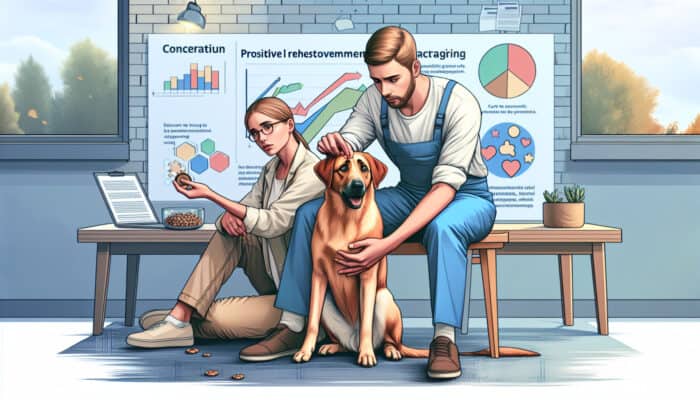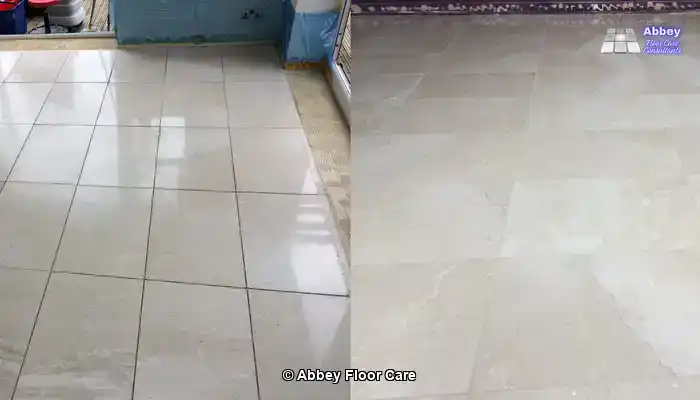Ultimate Resource for Understanding Your Pet's Playtime Requirements
Identifying Key Playtime Needs for Various Pet Species

Gaining a profound understanding of playtime schedules for your pets is essential for every responsible pet owner. Each pet species has unique playtime requirements that are influenced by factors such as species, age, and health status. By gaining insights into these specific needs, pet owners can create a well-rounded routine that significantly enhances their pets' overall well-being and happiness. For example, while dogs typically thrive on energetic activities, cats usually prefer play that simulates their natural hunting instincts. Below are the essential playtime requirements for several common pets:
- Dogs: Require a minimum of 1-2 hours of daily exercise that includes both structured play and opportunities for free exploration to maintain their physical and mental health.
- Cats: Generally need between 30 minutes and 2 hours of active play, with a focus on activities that stimulate their innate hunting instincts and keep them engaged.
- Rabbits: Require 3-4 hours of playtime outside their enclosure each day, emphasizing exploration and social interaction with their owners to foster happiness.
- Birds: Should have at least 1-2 hours of out-of-cage time every day to fly freely and engage in social activities that enrich their lives.
- Guinea Pigs: Thrive on approximately 2-4 hours of daily exploration and play to sustain their health and emotional well-being.
- Ferrets: Need around 2-4 hours of playtime outside their cage each day, focusing on social interaction and engaging activities to keep them stimulated.
By acknowledging these critical playtime requirements, pet owners can effectively organize their daily routines, ensuring their pets receive the necessary playtime for a vibrant and fulfilling life.
The Importance of Regular Playtime for Your Pet's Holistic Health
Regular playtime is absolutely essential for the overall health and happiness of your pets, significantly impacting both their physical and mental well-being. Engaging in ample play not only promotes physical fitness but also plays a crucial role in preventing severe issues such as obesity, behavioral problems, and heightened stress levels. Here are some important health benefits associated with consistent playtime for pets:
- Weight management: Routine play sessions help in maintaining an optimal weight, effectively preventing obesity-related health complications.
- Stress reduction: Participating in playtime reduces cortisol levels, alleviating feelings of anxiety and stress in pets.
- Improved mood: Engaging in play releases endorphins, contributing to a happier and more balanced pet.
- Socialisation: Regular playtime, especially with other animals, enhances social skills and interactions, fostering a well-adjusted pet.
- Muscle and joint health: Active play encourages flexibility and strength, significantly reducing the risk of injuries and joint issues.
- Enhanced cognitive function: Play acts as a brain stimulant, improving problem-solving skills and overall intelligence in pets.
By incorporating consistent play into your daily routines, you actively contribute to your pet’s long-term health and happiness, ensuring they remain vibrant and active throughout their lives.
Assessing Your Pet's Energy Levels to Optimize Playtime
Evaluating your pet’s energy levels is a crucial step in developing an effective playtime schedule tailored to their individual needs. By comprehending their specific cues, you can establish a routine that prevents over-exertion while avoiding boredom. Observing your pet's behavior during play is essential. For instance, high-energy pets may thrive with intense activities, while more relaxed pets might prefer quieter games. Here are some practical strategies to evaluate your pet's energy signals:
– Watch for playfulness: If your pet enthusiastically engages in games or fetch, this indicates high energy levels, signaling readiness for active play.
– Monitor rest patterns: Frequent resting or disinterest in play suggests fatigue or lower energy levels, indicating a need for less intense activities.
– Assess play styles: Active play styles indicate higher energy, while more sedentary behaviors may signal a preference for gentler activities.
– Evaluate reactions: Your pet's enthusiasm or lack of interest in play can provide insights into their need for stimulation and engagement.
By closely observing these cues, you can effectively create a personalized playtime schedule that caters to your pet’s specific preferences and needs.
Expert Advice on Tailoring Playtime Routines for Your Pets

Recommended Playtime Strategies from Veterinary Experts
Veterinarians and animal behaviorists emphasize the importance of customizing playtime schedules based on a pet's species, age, and health condition. For instance, a playful young dog may benefit from multiple short play sessions spaced throughout the day, while an older cat might prefer longer, gentler play sessions that suit their energy levels. Here are practical examples of effective playtime strategies recommended by veterinary professionals:
– Dogs: A suggested daily routine may include two 30-minute walks, complemented by a 30-minute play session focusing on fetch or agility training.
– Cats: Engage in three 10-minute interactive play sessions using laser pointers or feather wands spread throughout the day to keep them stimulated.
– Rabbits: Develop an exploration routine that allows them to roam a safe area for 1-2 hours daily while incorporating interactive toys that stimulate their minds.
– Birds: Provide structured out-of-cage time for 1-2 hours daily, including toys and opportunities for social interaction to enrich their environment.
These personalized schedules ensure that pets receive the physical and mental stimulation they need for their overall health and happiness, ultimately leading to a more fulfilling life.
Integrating Expert Recommendations into Your Daily Pet Care Routine
Incorporating expert suggestions into your daily routine can significantly enhance the effectiveness of your pet's playtime schedule, ensuring they thrive. Here are practical steps to seamlessly integrate expert advice into your pet care regimen:
– Set reminders: Utilize your phone or a calendar app to schedule play sessions, promoting consistency in your pet’s daily routine and reinforcing their expectations.
– Diversify activities: Regularly rotate toys and play styles to keep your pet engaged and challenged, introducing new activities based on expert insights.
– Involve family members: Encourage everyone in the household to participate in playtime, fostering a supportive environment that emphasizes the importance of regular interaction and bonding.
– Track progress: Maintain a log of your pet’s play sessions, noting duration and their reactions, which will help you evaluate what works best for their individual needs and preferences.
By following these actionable steps and integrating expert recommendations, you can create a robust playtime schedule that optimizes your pet's mental and physical well-being, ensuring they lead a happy and healthy life.
Evaluating the Outcomes of Expert Playtime Recommendations

Understanding the impacts of expert-recommended playtime strategies can significantly refine your pet's playtime schedule, thereby enhancing their health and happiness. Experts have identified several long-term benefits associated with implementing these strategies, including:
– Behavioural improvements: Pets involved in regular, structured play exhibit fewer signs of destructive behavior, anxiety, and aggression, as their energy is redirected positively through healthy outlets.
– Enhanced health outcomes: Regular playtime aids in weight management, cardiovascular health, and muscle tone, contributing to increased longevity and overall vitality.
– Stronger pet-owner relationships: Consistent play fosters deeper bonds, as pets associate playtime with positive interactions and emotional support from their owners, leading to a fulfilling companionship.
By critically analyzing these impacts, pet owners can further refine their playtime schedules to enhance their pets' well-being, fostering happier and healthier companions that thrive in a loving environment.
Assessing the Success of Expert Playtime Recommendations
Evaluating the effectiveness of expert-recommended playtime schedules can be validated through case studies and feedback from pet owners. Many owners report significant improvements in their pets' behavior and health after implementing expert-backed schedules. For instance, anecdotal evidence suggests that dogs displaying signs of boredom or aggression experienced considerable improvements after adopting structured playtime routines recommended by professionals.
Feedback from pet owners often highlights the following successful outcomes:
– Increased engagement: Pets that previously showed little interest in toys or activities became noticeably more active and enthusiastic in their play.
– Health improvements: Regular play correlates with better weight management and fewer veterinary visits due to inactivity-related health issues.
– Behavioural changes: Many pets exhibit reduced anxiety and improved social skills when provided with consistent opportunities for structured play, enhancing their quality of life.
These evaluations provide valuable insights for pet owners to refine their approaches, ensuring that playtime remains beneficial and aligned with their pets’ evolving needs.
Tips for Designing Effective Playtime Schedules
Creating a Balanced Playtime Schedule for Your Pet
Designing a well-balanced playtime schedule involves considering your pet's specific needs alongside your daily routine. An effective schedule should blend physical activity, mental engagement, and social interaction, addressing all aspects of your pet's well-being. To develop a comprehensive playtime schedule, consider the following factors:
– Pet's energy levels: Adjust the intensity and duration of play to match your pet's energy levels and preferences. Energetic pets may thrive on longer, more vigorous activities, while calmer pets might benefit from shorter, gentler play sessions that cater to their needs.
– Owner availability: Organize playtime around your daily commitments. If you work long hours, consider incorporating shorter, more frequent sessions or utilizing automated play using toys or devices during your absence.
– Variety in activities: Implement a diverse range of play types to keep your pet mentally stimulated and engaged, from fetch and tug-of-war to puzzle toys and interactive games that challenge their intellect.
– Health considerations: Always take into account any pre-existing health issues that may limit your pet's ability to participate in certain types of play, ensuring their safety and comfort.
By balancing these considerations, you can create a flexible playtime schedule that supports your pet's physical and mental well-being, ultimately fostering a happier and healthier companion.
Incorporating Variety into Your Pet's Playtime Activities
Introducing diversity into playtime activities is crucial for keeping pets mentally stimulated and engaged. Animals flourish when exposed to varied experiences that challenge them both physically and mentally. Here are several engaging play activities suitable for different pets:
- Dogs: Alternate between activities like fetch, tug-of-war, agility training, and scent games to maintain excitement and engagement throughout their playtime.
- Cats: Introduce puzzle feeders, laser pointers, and climbing structures to encourage exploration and stimulate their natural hunting instincts, keeping them active and entertained.
- Rabbits: Provide tunnels, digging toys, and arrange playdates with other rabbits to promote social interaction and exploration, enhancing their quality of life.
- Birds: Offer foraging toys, swings, and flight exercises to enhance their mental stimulation and physical activity, ensuring they remain healthy and happy.
- Guinea Pigs: Engage them with obstacle courses, tunnels, and opportunities for social interaction with other guinea pigs, which fosters their social skills.
- Ferrets: Utilize toys that promote exploration, such as tubes, and involve them in playful wrestling games to keep them physically active and mentally sharp.
By integrating a variety of activities into your pet's playtime, owners can ensure that their companions remain active, happy, and intellectually stimulated, leading to a more fulfilling life.
Adapting Playtime Schedules for Different Life Stages
As pets age, their playtime requirements evolve, necessitating adjustments to their schedules. Understanding these transitions is essential for maintaining their overall health and well-being throughout their lives. Young pets typically require more vigorous play and longer sessions, while older pets may benefit from gentler, shorter playtimes. Key adjustments include:
– Puppies and kittens: Require high-energy play to support their development; focus on socializing and teaching basic commands through engaging and enjoyable games that foster learning.
– Adult pets: Generally benefit from balanced play routines that incorporate both physical activities and mental challenges, promoting overall health and well-being.
– Senior pets: May need shorter play sessions with reduced intensity, centering on gentle activities such as strolls or interactive games that engage their minds without overexerting them.
By adjusting playtime schedules according to different life stages, pet owners can ensure that their pets experience suitable levels of engagement, ultimately supporting their physical and mental health.
Key Benefits of Structured Playtime for Pets
Enhancing Physical Health Through Structured Playtime
Structured playtime plays a vital role in significantly enhancing a pet's physical health by encouraging regular exercise and agility. Engaging in play allows pets to burn calories, build muscle, and maintain a healthy weight. Here are specific physical health benefits that pets can gain from structured play:
- Improved cardiovascular health: Regular play elevates heart rates, enhancing cardiovascular fitness and overall endurance, which is essential for a long, healthy life.
- Stronger muscles and bones: Engaging various muscle groups through play enhances strength and bone density, which is vital for longevity and mobility.
- Joint flexibility: Regular movement through play promotes flexibility and decreases the risk of arthritis and joint issues, contributing to a more active lifestyle.
- Weight management: Structured play effectively prevents obesity and associated health problems, allowing pets to maintain a healthy lifestyle and avoid chronic illnesses.
- Enhanced coordination and balance: Different play activities improve coordination and balance, significantly lowering the risk of injuries during other activities.
These components of physical health contribute to a pet's overall quality of life, promoting an active lifestyle and enabling them to enjoy their years to the fullest.
Improving Mental Well-being Through Playtime
Playtime is essential for enhancing a pet's mental well-being by reducing anxiety and boredom—two common issues that can lead to undesirable behaviors. Structured playtime aids a pet's mental health in several ways:
– Stimulating cognitive functions: Engaging in problem-solving activities, such as puzzle toys, encourages pets to think critically and creatively, enhancing their intellectual capabilities and keeping their minds sharp.
– Reducing stress levels: Playtime releases endorphins, which serve as natural stress relievers, fostering a sense of calmness and contentment in pets.
– Encouraging exploration: Opportunities for interactive play help pets learn about their surroundings while developing confidence, promoting curiosity, and enhancing mental agility.
Consistent engagement in structured playtime can lead to happier pets exhibiting fewer behavioral issues, thus improving their overall quality of life and emotional stability.
Strengthening Bonds with Owners Through Structured Playtime
Structured playtime fosters deeper emotional bonds between pets and their owners through shared activities and interactions. Engaging in play together creates positive associations and trust between pets and their humans. Activities that can enhance this bond during playtime include:
- Interactive games, such as fetch, tug-of-war, or hide-and-seek, promote teamwork and mutual enjoyment, enhancing the relationship between pets and their owners.
- Training sessions: Incorporating training into play reinforces commands and behaviors, making learning enjoyable for both pets and their owners, and strengthening their connection.
- Exploration walks: Taking leisurely walks together allows pets and owners to explore their environment while enjoying each other's company, further solidifying their bond.
- Socialization opportunities: Coordinating playdates with other pets enables both pets and their owners to engage in social activities, enhancing relationships and fostering community bonds.
These shared experiences significantly strengthen the emotional connection, resulting in a more harmonious and trusting relationship between pets and their owners, leading to a fulfilling companionship.
Developing Social Skills in Pets Through Interactive Play
Structured playtime is instrumental in helping pets develop essential social skills by encouraging interactions with other animals and humans. Socialization through play is crucial for behavioral development. Interactive playtime enhances a pet's social abilities by:
– Promoting positive interactions: Engaging in play with other pets teaches them appropriate behaviors and signals, reducing the likelihood of aggressive or fearful responses and fostering healthy social dynamics.
– Building confidence: Regular interaction with various pets and people allows them to adapt to new situations, enhancing their confidence and social skills, leading to well-adjusted behavior.
– Encouraging communication: Pets learn to communicate effectively through body language and vocalizations during play, which is crucial for their social development and interaction with humans.
By prioritizing interactive play, pet owners can significantly contribute to their pets' socialization, improving their ability to navigate various environments and relationships effectively.
Addressing Common Challenges in Maintaining Effective Playtime Schedules
Managing Time Constraints for Your Pet's Playtime
Balancing playtime with busy schedules can be challenging, yet it is crucial for your pet's health and happiness. Time constraints can lead to insufficient playtime, negatively impacting a pet's physical and mental well-being. Here are strategies to help manage time constraints effectively for your pet's playtime:
- Utilize short, frequent sessions: Instead of lengthy play sessions, opt for multiple short bursts of play throughout the day, making it easier to fit into busy schedules while keeping your pet active.
- Incorporate play into daily routines: Engage in play during regular activities, such as tossing a ball while taking a break or practicing tricks during commercial breaks, to maximize interaction.
- Schedule playdates: Arrange playdates with other pets to allow for socialization and exercise while managing your time more effectively, providing companionship and stimulation.
- Utilize technology: Consider using automated toys or interactive devices to provide play opportunities when you’re occupied or unavailable, ensuring your pet remains engaged.
By implementing these strategies, pet owners can ensure their pets receive the essential playtime they need, even amidst busy lifestyles, promoting their overall well-being.
Encouraging Your Pet's Participation in Playtime
Some pets may resist playtime for various reasons, such as fear, anxiety, or lack of interest. Encouraging a reluctant pet to engage in play requires patience and understanding. Here are strategies to promote engagement:
– Start slowly: Gradually introduce new toys or activities to avoid overwhelming your pet, allowing them to acclimate to the concept of playtime and develop interest at their own pace.
– Use enticing toys: Experiment with different types of toys to discover what captures your pet’s interest, such as squeaky toys, feather wands, or interactive puzzles that stimulate their curiosity.
– Incorporate treats: Utilize treats or rewards during playtime to create a positive association with play, encouraging your pet to participate willingly and enthusiastically.
– Observe body language: Pay close attention to your pet’s reactions; if they appear stressed or disinterested, take a step back and try again later, ensuring a positive experience.
These approaches will help create a positive playtime experience, motivating pets to engage more enthusiastically and enjoyably.
Managing Playtime Needs for Multiple Pets
Coordinating playtime for multiple pets can be complex, but it is manageable with the right strategies. Each pet may have different play needs, requiring thoughtful scheduling to meet their individual requirements. Here are tips for effectively managing playtime schedules for multiple pets:
- Individual play sessions: Schedule separate playtime for each pet to ensure they receive the attention and stimulation they need, catering to their unique personalities.
- Group activities: Engage in group activities that cater to all pets, promoting socialization and reducing the chance of jealousy or competition among them.
- Rotate toys: To prevent competition, rotate toys among pets, ensuring each pet has unique items to play with during their sessions, allowing for shared enjoyment.
- Monitor interactions: Supervise playtime to ensure all pets are comfortable and safe, intervening if any play becomes too rough or aggressive to maintain harmony.
By employing these strategies, pet owners can successfully manage playtime for multiple pets, ensuring that each companion remains happy, engaged, and emotionally fulfilled.
Research-Backed Insights on the Benefits of Structured Playtime for Pets
What Research Reveals About Playtime and Pet Health
Research consistently indicates that regular playtime can lead to significant health improvements in pets. Studies show that consistent participation in play activities promotes both physical and psychological well-being. Key findings from research regarding the health benefits of playtime for pets include:
– Reduced obesity rates: Regular playtime correlates with lower obesity rates in pets, facilitating healthier body weights and fewer obesity-related diseases.
– Lower stress levels: Pets engaging in regular play exhibit reduced cortisol levels, indicating lower stress and anxiety, which significantly enhances their quality of life.
– Improved behaviour: Pets participating in structured playtime show fewer behavioral issues, such as aggression or destructive tendencies, highlighting the importance of mental engagement through play.
– Enhanced social skills: Research demonstrates that pets involved in regular play are better socialized, improving their interactions with other animals and humans alike, fostering well-rounded companions.
These findings emphasize the importance of incorporating play into daily routines to promote long-term health and well-being in pets, ultimately leading to a more fulfilling life.
The Contribution of Playtime to Behavioral Development
Playtime plays a crucial role in the behavioral development of pets, facilitating socialization and training. Engaging in play promotes critical developmental skills that positively influence a pet's behavior. Key impacts of playtime on a pet's behavior and development include:
– Socialization skills: Interaction with other pets during play fosters social skills, teaching appropriate behaviors and reducing the likelihood of aggressive or fearful responses, ensuring they grow into well-adjusted adults.
– Learning through exploration: Pets learn about their environment and develop problem-solving skills through play, enhancing their adaptability to new situations and challenges.
– Building confidence: Regular play boosts confidence, allowing pets to feel more secure in their surroundings and less fearful of unfamiliar experiences, promoting emotional stability.
By prioritizing play, pet owners significantly contribute to their pets’ behavioral development and long-term well-being, ensuring they grow into happy, well-adjusted companions.
Long-Term Effects of Consistent Playtime on Pets
Consistent playtime can have a profoundly positive impact on a pet's overall well-being. Engaging in regular play helps maintain a pet's health and happiness throughout its life. Expert analysis on the long-term health outcomes associated with regular playtime includes:
– Extended lifespan: Pets engaging in regular physical activity through play tend to live longer, healthier lives, reducing the risk of chronic diseases and enhancing their quality of life.
– Reduced behavioral issues: Consistent playtime can decrease occurrences of anxiety, aggression, and other behavioral problems, fostering a more harmonious pet-owner relationship and promoting peace at home.
– Improved quality of life: Pets that receive regular playtime often exhibit higher energy levels, enhanced mood, and better overall mental health, leading to a fulfilling life filled with joy and companionship.
– Strengthened bonds: Long-term engagement in play fosters lasting emotional connections between pets and their owners, thereby enhancing the quality of their relationship and creating cherished memories.
By understanding these long-term effects, pet owners can prioritize play as a fundamental aspect of their pet's daily routines, ensuring a lifetime of happiness and health.
Leveraging Technology to Enhance Your Pet's Playtime Experience
Utilizing Apps to Effectively Track and Manage Your Pet's Playtime
Mobile applications can assist in tracking and managing your pet's playtime, ensuring they receive adequate exercise and stimulation. These tools come equipped with features that enable pet owners to efficiently manage their pets' play schedules. When selecting a playtime tracking app, consider the following features:
- Activity tracking: The ability to log play sessions, walks, and other activities to monitor your pet’s physical engagement and exercise levels, helping you stay organized.
- Reminder alerts: Notifications to remind pet owners of scheduled playtimes, ensuring consistency in routines and engagement, keeping your pet active.
- Customisation options: Flexibility to tailor schedules based on individual pet needs, including specific activity types and durations that cater to their preferences.
- Progress monitoring: Visual reports or graphs displaying activity levels over time, helping owners assess their pet's fitness and engagement, encouraging improvements.
Utilizing technology in the form of apps can streamline the management of pet playtime, ensuring pets remain active, engaged, and healthy, even in busy households.
Enhancing Playtime with Automated Toys
Automated toys offer play opportunities when owners are unavailable, ensuring pets stay engaged and stimulated even in their absence. These toys often feature interactive elements that encourage play and exploration, keeping pets entertained. To effectively integrate automated toys into your pet's playtime schedule, consider:
– Setting timers: Program toys to activate at specific times, allowing pets to engage in play independently while you are away, ensuring they remain active.
– Rotating toys: Alternate the use of automated toys to keep the experience fresh and prevent boredom, ensuring pets remain interested and engaged in their play.
– Combining with human interaction: Use automated toys alongside scheduled human playtime, allowing pets to enjoy both solo play and shared activities with their owners for a well-rounded experience.
By incorporating automated toys, pet owners can significantly enhance their pets’ playtime experience, particularly when they are unable to be present.
Using Wearable Devices to Monitor Pet Activity Levels
Wearable devices are invaluable for monitoring pet activity levels, enabling effective tailoring of playtime schedules to meet individual needs. These devices provide critical insights into a pet’s behavior and overall health. Benefits of wearable technology for managing pet playtime include:
– Activity tracking: Monitoring daily activity levels allows owners to determine if pets meet their exercise needs, enabling adjustments to play schedules as necessary to promote health.
– Health insights: Many wearables track metrics such as heart rate and caloric burn, providing comprehensive information on overall health and fitness, helping owners adjust exercise routines.
– Customisable goals: Owners can set specific activity goals based on their pets’ needs, ensuring targets align with health recommendations and promote healthy lifestyles.
– Alerts and notifications: Wearables can notify owners if pets are inactive for extended periods, prompting necessary engagement and play to keep them active.
By utilizing wearable technology, pet owners can optimize their pets' playtime schedules, ensuring they remain active, happy, and healthy while addressing their unique needs.
Enhancing Playtime Management with Smart Home Integration
Smart home devices can automate playtime schedules, allowing for seamless integration with other home systems. These technologies enhance pet care by providing interactive and engaging play environments that promote mental stimulation and physical activity. Here are ways smart home technology can enhance pet playtime routines:
– Automated feeding and playtime: Schedule feeding times and play sessions, ensuring pets receive consistent care and attention throughout the day, promoting routine.
– Remote interaction: Use smart cameras to monitor pets remotely and initiate play sessions via interactive toys or treat dispensers, even when you're away, helping maintain engagement.
– Integration with voice assistants: Utilize voice commands to engage with pets through toys or set reminders for playtime, making management more convenient and efficient for busy owners.
By leveraging smart home technology, pet owners can significantly enhance their pets' playtime experiences while ensuring they receive adequate engagement and care, promoting their overall happiness.
Fostering Engagement Through Virtual Playtime Sessions
Video calls enable interactive playtime sessions with pets, making them particularly useful for owners who are away from home and want to maintain a connection with their pets. Engaging with pets through virtual platforms fosters emotional bonds, even from a distance. The advantages of using video calls for pet playtime include:
– Maintaining connections: Virtual sessions help reinforce bonds between pets and owners, reducing feelings of loneliness and anxiety for both parties during absences, promoting emotional well-being.
– Interactive engagement: Owners can participate in play from afar by using toys that respond to commands or encouraging pets to engage with interactive devices available at home, keeping them active.
– Monitoring behavior: Video calls allow owners to observe their pets’ interactions and behaviors, providing insights into their emotional states and engagement levels, helping improve their overall experience.
By incorporating virtual playtime sessions into routines, pet owners can ensure meaningful engagement, even when physically apart from their beloved companions, promoting a loving bond.
Adjusting Playtime Schedules for Seasonal Changes
Adapting Playtime for Varied Weather Conditions
Adapting playtime to accommodate different weather conditions is essential for ensuring the safety and comfort of your pet. Extreme temperatures can pose risks, making it vital for pet owners to modify their playtime schedules accordingly. Here are strategies for adjusting playtime during hot or cold weather:
– Hot weather: Schedule outdoor play for cooler times of the day, such as early mornings or late evenings, to prevent overheating and dehydration. Consider incorporating water play or shaded areas for relief.
– Cold weather: Limit outdoor activities to shorter bursts while focusing on brisk walks and indoor play. Ensure pets have appropriate insulation and warmth during play, especially if they are older or have health issues.
– Rainy days: Engage in indoor activities that provide physical and mental stimulation, such as interactive toys, agility training, or puzzle games that keep pets occupied and happy indoors.
By modifying playtime to seasonal changes, pet owners can ensure their pets remain active, safe, and healthy all year round, regardless of the weather.
Exploring Indoor Playtime Alternatives
Indoor playtime alternatives can keep pets active when outdoor play is not feasible. Engaging pets indoors requires creativity to ensure they remain stimulated and fulfilled. Here are various indoor play activities that can replace outdoor play:
- Obstacle courses: Create a fun and challenging indoor obstacle course using furniture and safe household objects to stimulate their agility and problem-solving skills.
- Puzzle toys: Use interactive toys that dispense treats or require problem-solving skills to keep pets engaged and entertained, providing mental challenges.
- Hide and seek: Play hide and seek with treats or toys, encouraging pets to use their senses and problem-solving skills to find hidden surprises, enhancing their cognitive function.
- Interactive games: Engage in games like tug-of-war or fetch with soft toys that are safe for indoor play, ensuring excitement and interaction while promoting bonding.
Incorporating these alternatives into playtime guarantees that pets receive the mental and physical stimulation they need, regardless of weather conditions, ensuring their well-being.
Balancing Playtime During Changes in Daylight Hours
Balancing playtime during changes in daylight hours is essential for maintaining a consistent routine for pets. As seasons shift, days can become shorter or longer, affecting when playtime can occur. To adjust playtime schedules for shorter or longer days, consider the following:
– Utilizing artificial light: Use indoor lighting to create a comfortable play environment during darker hours, ensuring safety during evening play and promoting engagement.
– Adjusting schedules: Shift playtime to fit available daylight, increasing morning or evening sessions when the sun is shining to maximize outdoor time.
– Incorporating flexibility: Allow for spontaneous indoor play sessions when daylight is limited, ensuring pets remain active regardless of external conditions, maintaining their health.
By adapting playtime schedules to seasonal changes in daylight, pet owners can ensure their pets maintain an engaging and active lifestyle, promoting their overall happiness.
Ensuring a Safe Play Environment for Your Pets
Creating a Secure Play Area for Your Pets
Establishing a secure play environment is crucial for preventing injuries and ensuring your pets have an enjoyable playtime. Pet owners must actively create safe areas where pets can engage in play. Key elements to include in a safe play area for pets are:
- Secure fencing: Ensure outdoor play areas are properly fenced to prevent escapes or encounters with wild animals that could pose risks to your pets' safety.
- Non-toxic toys: Use toys specifically designed for pets, ensuring they are safe and durable enough to withstand vigorous play without breaking or posing hazards.
- Clear hazards: Remove any hazardous objects or substances that could pose risks, such as sharp edges or toxic plants that could harm pets and lead to accidents.
- Soft surfaces: Provide cushioned surfaces for outdoor play to minimize the risk of injuries from falls or rough landings, ensuring a safer play environment.
Creating a secure environment allows pets to enjoy playtime while minimizing risks, enabling owners to focus on engagement without worry, fostering a joyful experience.
Monitoring Playtime for Signs of Distress
Monitoring pets during playtime is crucial for identifying signs of distress or overexertion. Being attentive to your pet's body language and behavior is essential for their safety and well-being. Key signs to watch for during playtime include:
– Excessive panting: Heavy panting can indicate overheating or exhaustion, signaling the need for a break or a cooler environment to ensure their comfort.
– Lethargy: If your pet appears disinterested in play or seems tired, it may be time to stop or reduce the intensity of activities to avoid further fatigue.
– Whining or growling: Vocalizations can indicate discomfort or frustration, prompting you to reassess the play situation and make necessary adjustments for their well-being.
– Refusal to engage: If your pet withdraws from play or exhibits signs of fear, it may be necessary to adjust activities or provide comfort and reassurance to foster a positive experience.
By closely observing your pet's cues, owners can create a safer and more enjoyable playtime experience for their pets, ensuring their comfort and happiness.
Emergency Preparedness Measures During Playtime
Being prepared for emergencies during playtime can prevent accidents from escalating into serious situations. Pet owners should implement measures to effectively handle potential emergencies. Key emergency measures to incorporate during pet playtime include:
– First aid kit: Maintain a pet-specific first aid kit readily accessible, including essentials like bandages, antiseptic wipes, and emergency contact information for quick access in case of injuries.
– Know local veterinarians: Familiarize yourself with nearby veterinary clinics and their contact information for swift access in case of emergencies that may arise unexpectedly during play.
– Emergency protocols: Establish clear protocols for responding to injuries or accidents, including assessing the situation calmly and providing necessary care to ensure your pet’s safety.
– Safe transportation: Have carriers or restraints available for transporting pets in case of emergencies, ensuring their safety and comfort during travel to the veterinary clinic.
By being proactive and prepared, pet owners can ensure a safer playtime experience, effectively addressing potential emergencies as they arise, and safeguarding their beloved companions.
Frequently Asked Questions About Pet Playtime
What is the ideal amount of playtime for dogs?
Dogs typically require about 1-2 hours of exercise daily, which can be split into multiple play sessions to keep them physically and mentally stimulated and happy.
How can I tell if my pet is bored?
Signs of boredom in pets may include destructive behavior, excessive vocalization, restlessness, or a lack of interest in toys and interaction with their environment.
What types of toys are best for interactive play?
Interactive toys that promote engagement include puzzle feeders, tug toys, and automated toys that encourage movement and problem-solving, keeping pets entertained and engaged during playtime.
How often should I change my pet's play activities?
Rotating play activities weekly can help prevent boredom. Introducing new toys or games keeps pets mentally stimulated and engaged, ensuring they look forward to playtime.
Can indoor playtime be as beneficial as outdoor play?
Yes, indoor play can be equally beneficial, provided it involves physical and mental challenges. Activities like puzzle games and obstacle courses can effectively keep pets active indoors, promoting their health.
What should I do if my pet is reluctant to play?
Begin with low-pressure, interactive activities that utilize enticing toys or treats. Gradually encourage engagement while monitoring their comfort level during play to ensure a positive experience.
How can I create a safe play environment for my pet?
Ensure the play area is secure, hazard-free, and equipped with safe, durable toys. Supervise playtime to monitor interactions and prevent accidents or injuries, ensuring a safe environment.
What signs indicate my pet is overexerted during play?
Signs of overexertion include excessive panting, lethargy, reluctance to engage, or vocalizations like whining. It's essential to monitor their behavior closely and adjust activities as needed for their well-being.
How can technology help address my pet's exercise needs?
Apps, automated toys, and wearable devices can help track activity levels, schedule playtime, and ensure pets receive adequate exercise, even when owners are busy or unavailable, promoting their health.
What are some good indoor play activities for rainy days?
Indoor play can include interactive puzzle toys, hide-and-seek games, obstacle courses using household items, and gentle tug-of-war to keep pets engaged and active, regardless of the weather.
Connect with us on Facebook!
The Article Playtime Schedules for Pets: A Universal Guide First Published On https://elgatoencasa.com
The Article Pet Playtime Schedules: Your Ultimate Guide Was Found On https://limitsofstrategy.com
The Article Pet Playtime Schedules: The Essential Guide for Owners First Appeared ON
: https://ad4sc.com















Leave a Reply